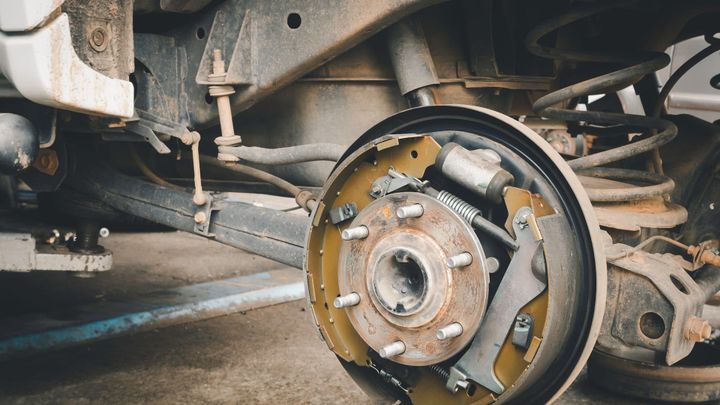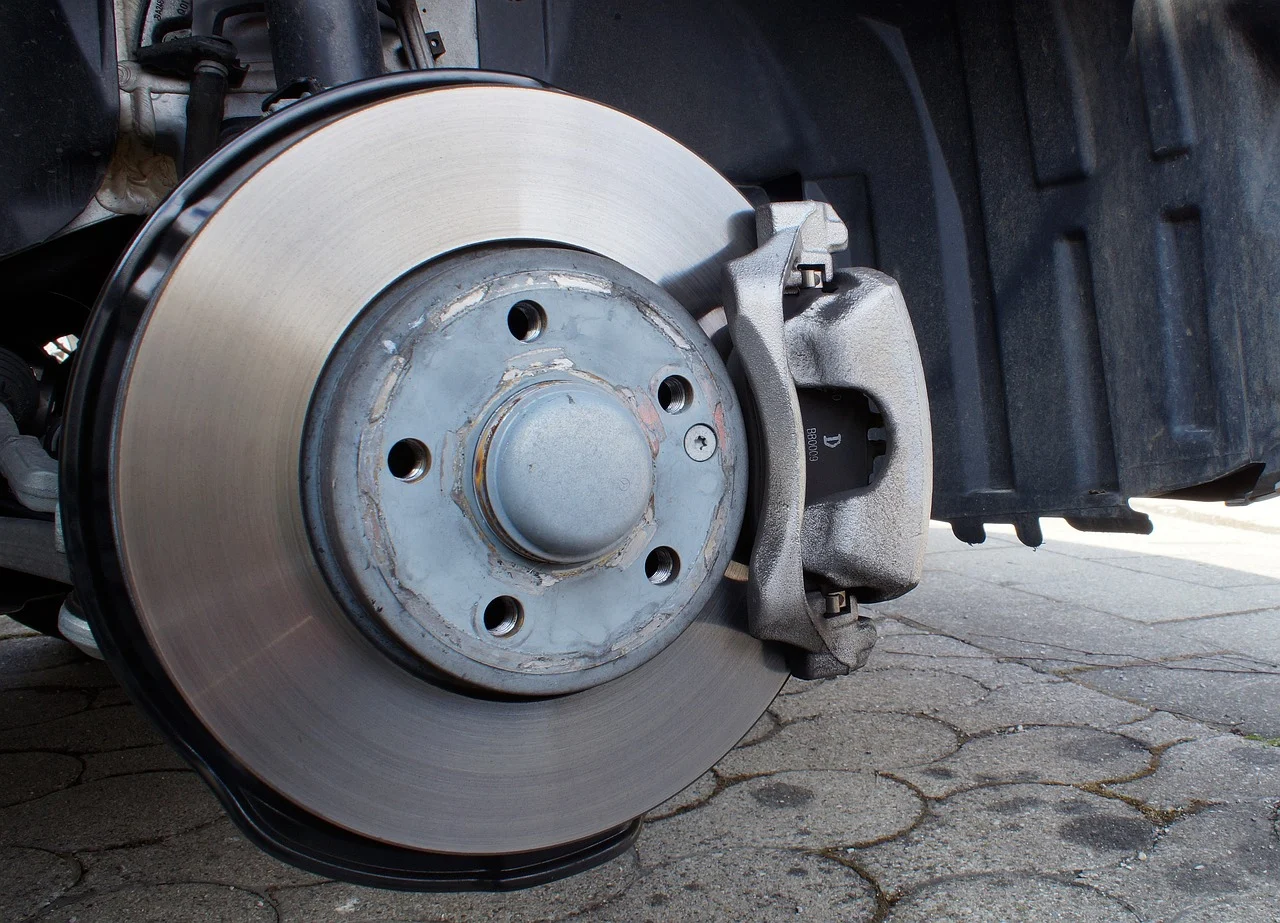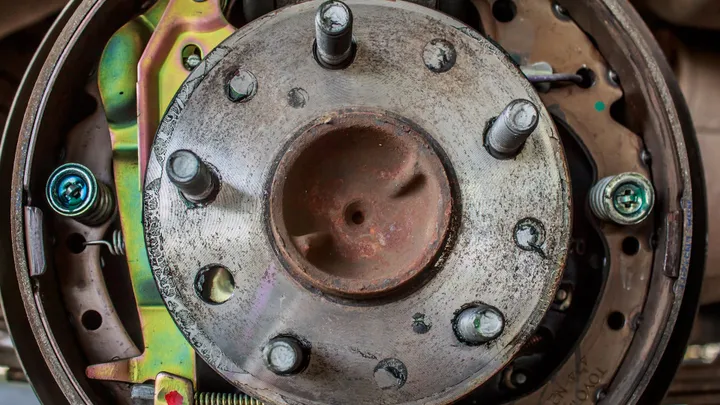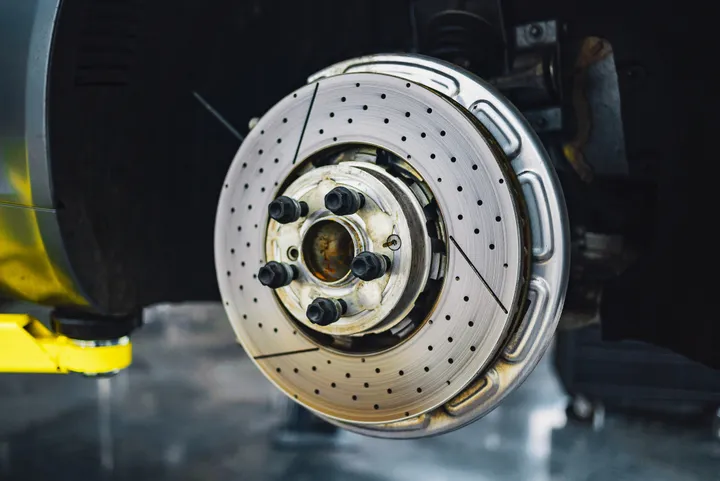


Drum brake service costs can vary significantly depending on factors such as the extent of the repair, the quality of replacement parts, and labor rates. On average, a complete drum brake replacement can range from $200 to $500 per axle. By understanding the factors that influence these costs and following recommended maintenance practices, you can get the best price for your brake repair while ensuring your vehicle's safety and reliability.
In this comprehensive article, we'll dive into the world of drum brakes, exploring their components, common problems, and the various factors that affect service costs. We'll also discuss the inspection process, repair and replacement services, and provide tips for saving money on drum brake maintenance. By the end of this article, you'll have a thorough understanding of drum brake service costs and how to keep your brakes in top condition.

Drum brakes are a type of brake system that utilizes a rotating drum and brake shoes to slow or stop a vehicle. When the brake pedal is pressed, hydraulic pressure forces the brake shoes outward, pressing against the inside of the drum and creating friction to slow the wheel's rotation. Drum brakes are commonly found on the rear axles of many vehicles, particularly older models and some modern economy cars.
Maintaining drum brakes is essential for ensuring your vehicle's safety and performance. Properly functioning brakes are crucial for stopping your car quickly and safely, especially in emergency situations. Regular maintenance can also help extend the life of your brake components, preventing costly repairs in the future. Neglecting drum brake maintenance can lead to reduced braking power, increased stopping distances, and even complete brake failure, putting you and others at risk on the road.

A drum brake system consists of several key components that work together to slow or stop your vehicle:
Brake drum: A cylindrical metal drum that rotates with the wheel
Brake shoes: Curved metal shoes lined with friction material that press against the drum
Wheel cylinder: A hydraulic component that pushes the brake shoes outward
Brake hardware: Springs, pins, and adjusters that hold the shoes in place and control their movement
Brake backing plate: A metal plate that mounts the brake components to the axle
When you press the brake pedal, hydraulic fluid is forced into the wheel cylinder, which pushes the brake shoes outward. As the shoes contact the rotating drum, friction is generated, slowing or stopping the wheel's rotation. When you release the brake pedal, the springs pull the shoes back to their original position, allowing the wheel to rotate freely again. The brake adjuster mechanism ensures that the shoes maintain the proper distance from the drum as they wear down over time.

Brake shoes are the most common component to wear out in a drum brake system. As the friction material on the shoes wears down, braking performance diminishes, and you may notice symptoms such as:
Reduced stopping power
Increased pedal travel
Grinding noises when braking
Worn brake shoes need to be replaced to restore proper braking function.
Over time, brake drums can become scored, grooved, or warped due to heat and wear. These surface imperfections can cause:
Pulsations in the brake pedal
Reduced braking efficiency
Accelerated wear on the brake shoes
In some cases, brake drums can be resurfaced to restore a smooth braking surface, but if the damage is severe, replacement may be necessary.
Wheel cylinders are prone to leaking due to age, corrosion, or wear on the internal seals. A leaking wheel cylinder can cause:
Brake shoes to drag against the drum
Reduced braking performance
Increased wear on brake components
Leaking wheel cylinders must be replaced or rebuilt to restore proper brake function.
Brake adjusters are responsible for maintaining the proper distance between the brake shoes and the drum as the shoes wear down. If the adjusters become seized or fail to function properly:
Shoes may not contact the drum correctly
Reduced braking performance may occur
Uneven wear on brake shoes can develop
Seized adjusters must be replaced or lubricated to ensure proper brake operation.
Brake fluid is hygroscopic, meaning it absorbs moisture from the air over time. Contaminated brake fluid can cause:
Corrosion within the brake system
Damage to wheel cylinders, brake lines, and other components
Reduced braking performance by lowering the fluid's boiling point
Brake fluid should be flushed and replaced periodically to maintain the health of the brake system.
Several factors can impact the total cost of drum brake service:
The quality and cost of replacement parts can significantly influence the overall cost of drum brake service. Using high-quality, original equipment manufacturer (OEM) parts or their equivalent ensures reliable performance and longevity but may come at a higher price point. Lower-cost, aftermarket parts may save money upfront but could result in shorter service life or reduced performance.
Labor costs are a significant factor in drum brake service, as the process of disassembling, inspecting, and reassembling the brake components can be time-consuming. Labor rates vary by location and shop, with hourly rates ranging from $80 to $160 or more. The total labor cost will depend on the complexity of the repair and the time required to complete the work.
The make and model of your vehicle can affect drum brake service costs in several ways:
Some vehicles require more expensive or harder-to-find parts
Certain models may have more complex brake systems that require additional labor
Luxury or performance vehicles may have higher parts and labor costs compared to economy models
The overall condition of your brake system will impact the cost of drum brake service. If your brakes have been neglected or are severely worn, more extensive repairs may be necessary, such as replacing the drums, wheel cylinders, or brake lines. These additional repairs will increase the total cost of the brake service.
Vehicles with a history of regular brake maintenance may require less extensive repairs during drum brake service, as components are more likely to be in better condition. Conversely, vehicles with a history of neglect or infrequent maintenance may require more comprehensive repairs, increasing the overall cost of the service.
During a drum brake inspection, the technician will follow these steps:
The technician will first perform a visual examination of the brake components, checking for signs of wear, damage, or leaks on the:
Brake drums
Brake shoes
Hardware
Wheel cylinders
Brake lines and hoses
The technician will measure the brake drum diameter to ensure it is within the manufacturer's specifications. If the drum is worn beyond the maximum allowable diameter, it must be replaced. The technician will also check for runout, which is the amount of variation in the drum's roundness. Excessive runout can cause pulsations in the brake pedal and uneven wear on the brake shoes.
The thickness and condition of the brake shoe lining will be assessed to determine if replacement is necessary. The technician will:
Measure the lining thickness and compare it to the manufacturer's minimum allowable thickness
Inspect the lining for uneven wear, cracks, or contamination from oil or grease
The wheel cylinders will be evaluated for proper function and leaks. The technician will check for:
Signs of fluid leakage
Corrosion or damage to the cylinder body or seals
If a wheel cylinder is leaking or not functioning correctly, it must be replaced or rebuilt.
The brake hardware, including the springs, pins, and adjusters, will be checked for wear, damage, or improper operation. The technician will ensure that:
Adjusters are functioning correctly
Brake shoes are returning to their proper position when the brakes are released
Any worn or damaged hardware will be replaced.
During a drum brake service, the technician may perform the following repairs or replacements:
If the brake shoes are worn beyond the minimum allowable thickness or are damaged, they will need to be replaced. The technician will:
Remove the old shoes
Install new shoes
Ensure that the new shoes are properly seated and secured with the brake hardware
If the brake drums are within the maximum allowable diameter and have minimal scoring or wear, they may be resurfaced on a brake lathe to restore a smooth braking surface. However, if the drums are worn beyond the maximum allowable diameter or have excessive scoring or damage, they must be replaced.
If a wheel cylinder is leaking or not functioning properly, it will need to be repaired or replaced. In some cases, the cylinder can be rebuilt with new seals and components. However, if the cylinder is severely corroded or damaged, replacement is necessary.
Worn or damaged brake hardware, such as springs, pins, and adjusters, will be replaced during the drum brake service. This ensures that the brake shoes are properly secured and operating correctly.
During a drum brake service, the brake fluid should be inspected for contamination or moisture. If the fluid appears dirty or has absorbed excessive moisture, it should be flushed and replaced with fresh, clean fluid that meets the manufacturer's specifications.
After the brake components have been replaced or serviced, the technician will:
Adjust the brakes to ensure proper operation
Adjust the brake shoes to the proper distance from the drum
Ensure that the adjusters are functioning correctly
Lubricate any moving parts, such as the adjuster threads and pivot points, to prevent seizing and ensure smooth operation
The average cost for a complete drum brake replacement, including parts and labor, ranges from $200 to $500 per axle. This cost can vary depending on the vehicle make and model, the quality of parts used, and the labor rates of the repair shop.
The cost of individual drum brake components can vary, but here is a general breakdown of the parts costs:
| Part | Cost Range |
|---|---|
| Brake drums | $40 - $150 each |
| Brake shoes | $30 - $75 per axle |
| Wheel cylinders | $25 - $50 each |
| Brake hardware kit | $15 - $50 per axle |
Labor costs for drum brake service can vary based on several factors:
a. Hourly labor rates: Repair shops charge hourly labor rates that can range from $80 to $160 or more, depending on the location and type of shop.
b. Time required for drum brake service: Replacing drums, shoes, hardware, and adjusting the brakes on one axle typically takes 1-2 hours of labor.
a. Front vs. rear drum brakes: Front drum brakes, found on some older vehicles, may cost slightly more to service than rear drum brakes due to their location and accessibility.
b. Brake fluid flush: Having the brake fluid flushed and replaced at the same time as the drum brake service will add $50 to $100 to the total cost.
Here are some tips to help you save money on drum brake repairs:
Regular brake maintenance is key to saving money on drum brake repairs. By having your brakes inspected and serviced at the first signs of wear or problems, you can avoid more extensive and costly repairs down the line. Catching issues early can prevent damage to other components and keep your brake system in good working order.
Choosing a reputable repair shop can help you save money on drum brake repairs in the long run. Look for shops with:
Certified technicians
Positive customer reviews
A history of quality work
While a reputable shop may not always have the lowest prices, they are more likely to use quality parts and perform the work correctly, reducing the likelihood of future problems or repairs.
Using high-quality replacement parts can save you money on drum brake repairs over time. While lower-cost, aftermarket parts may be tempting, they often have a shorter lifespan and may not perform as well as OEM or high-quality equivalent parts. Investing in quality parts can extend the life of your brake system and reduce the frequency of repairs.
Some brake parts and services may be covered under your vehicle's warranty or an extended warranty. Be sure to:
Check your warranty terms
Take advantage of any covered repairs or replacements
This can significantly reduce your out-of-pocket costs for drum brake service.
There are several signs that indicate your drum brakes may need replacement:
Reduced stopping power or increased pedal travel
Grinding, squealing, or scraping noises when braking
Pulsations or vibrations in the brake pedal
Uneven or rapid wear on the brake shoes
Leaking wheel cylinders or brake fluid
If you notice any of these signs, it's important to have your brakes inspected as soon as possible to determine the extent of the wear or damage.
Drum brake service intervals can vary depending on the vehicle make and model, as well as driving conditions and habits. However, here are some general guidelines:
Inspect brakes every 12,000 miles or 12 months, whichever comes first
Replace brake fluid every 2-3 years or 24,000-36,000 miles
Replace brake shoes when the lining thickness reaches the minimum allowable level
Replace brake drums when they exceed the maximum allowable diameter or have excessive scoring or damage
Following these recommended service intervals can help ensure your drum brakes remain in good working order and prevent more costly repairs.
Properly functioning brakes are essential for vehicle safety. If you suspect any issues with your drum brakes, it's crucial to have them inspected and repaired as soon as possible. Ignoring brake problems can lead to:
Reduced stopping power
Increased stopping distances
Complete brake failure
These issues put you and others at risk on the road. When it comes to brake repairs, always prioritize safety over cost.
Understanding drum brake service costs and the factors that influence them is essential for making informed decisions about maintaining your vehicle's brake system. By following recommended service intervals, choosing a reputable repair shop, and using quality replacement parts, you can keep your drum brakes in good working order while minimizing repair costs. Remember, investing in regular brake maintenance and timely repairs is crucial for ensuring your vehicle's safety and reliability on the road.
Drum brakes should be inspected at least once a year or every 12,000 miles, whichever comes first. More frequent inspections may be necessary for vehicles that are driven in harsh conditions or used for towing.
If the brake drums are within the maximum allowable diameter and have minimal scoring or wear, you can often get away with just replacing the brake shoes. However, if the drums are excessively worn, scored, or out-of-round, they should be replaced along with the shoes for optimal braking performance.
Some noise from drum brakes is normal, especially when they are cold or slightly damp. However, excessive squealing, grinding, or scraping noises can indicate worn brake shoes, damaged hardware, or other issues that require attention.
The lifespan of drum brakes varies depending on driving habits, vehicle type, and environmental conditions. On average, drum brakes can last between 150,000 to 200,000 miles before requiring replacement, assuming regular maintenance and inspection.
In general, drum brake parts are less expensive than disc brake components. However, drum brakes often require more labor time to service due to their complex assembly, which can result in higher overall service costs compared to disc brakes.
In many cases, it is possible to convert from drum brakes to disc brakes. However, this is a significant modification that requires changes to the vehicle's suspension, wheel hubs, and brake lines. Disc brake conversion kits are available for some vehicles, but professional installation is recommended.
Signs that your drum brakes may need adjustment include a low or spongy brake pedal, increased stopping distance, or the vehicle pulling to one side when braking. If you experience any of these symptoms, have your brakes inspected by a professional.
Servicing drum brakes requires a certain level of mechanical skill and specialized tools. While it is possible for a competent DIY mechanic to perform drum brake service, it is generally recommended to have the work done by a professional to ensure safety and proper function.
Labor costs for a complete drum brake job (replacing drums, shoes, hardware, and adjusting the brakes) typically range from $150 to $300 per axle, depending on the vehicle and the shop's hourly labor rate. This usually equates to 1.5 to 3 hours of labor per axle.
As drum brakes wear, they release brake dust that can contain heavy metals and other pollutants. While less studied than disc brake wear particles, drum brake dust can still contribute to air and water pollution. Proper maintenance and disposal of worn brake components can help mitigate these environmental concerns.

Miguel started tinkering with car radios as a teenager, fascinated by the intricate dance of wires and circuits. This passion led him to pursue a career as an automotive electrician. For the past 10 years, Miguel has tackled everything from flickering headlights to mysterious electrical gremlins. He thrives on troubleshooting electrical problems and enjoys sharing his knowledge to empower car owners to understand their vehicles better.







